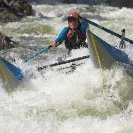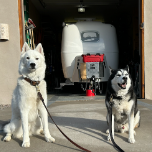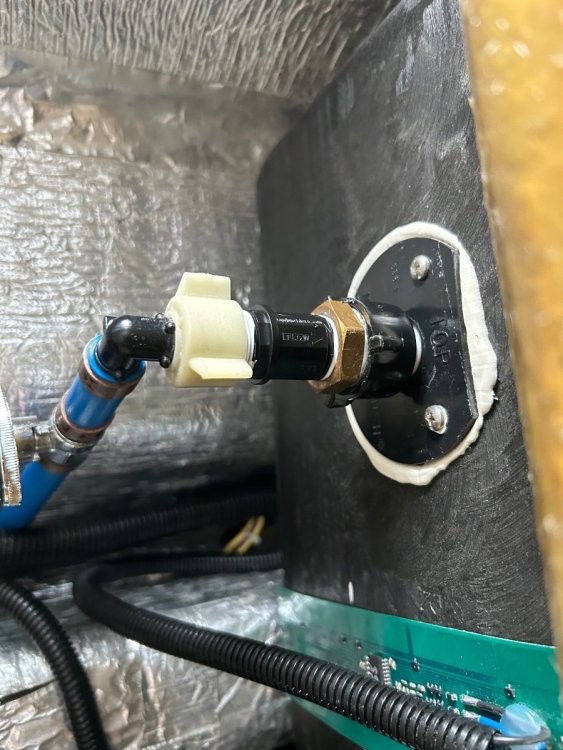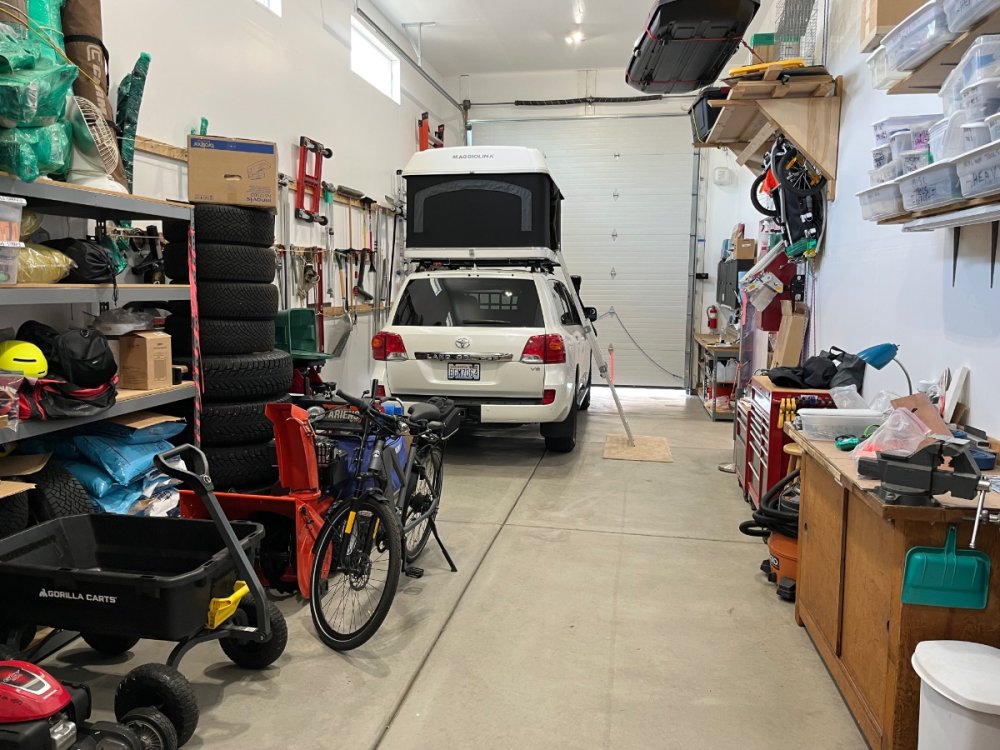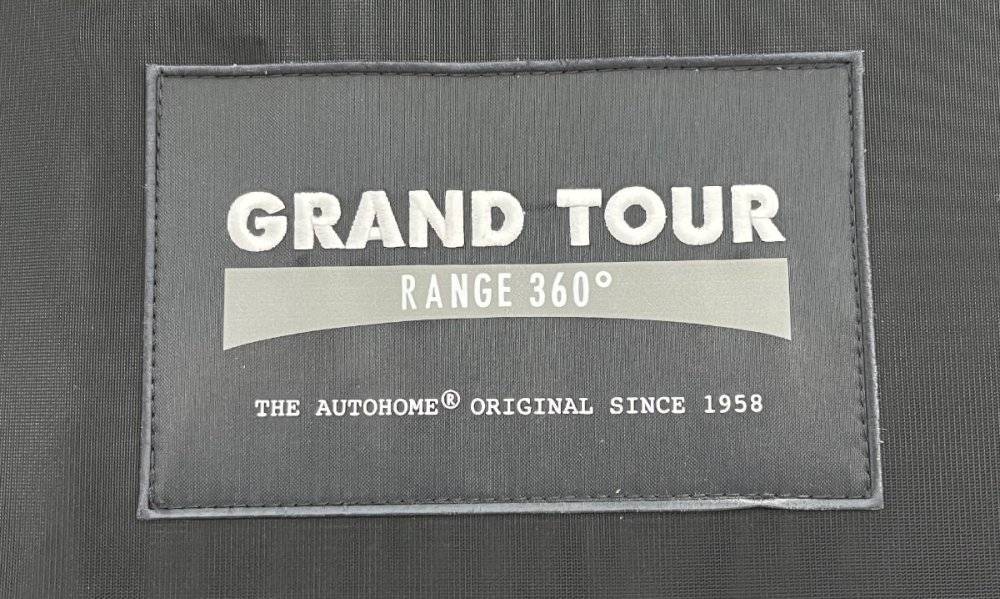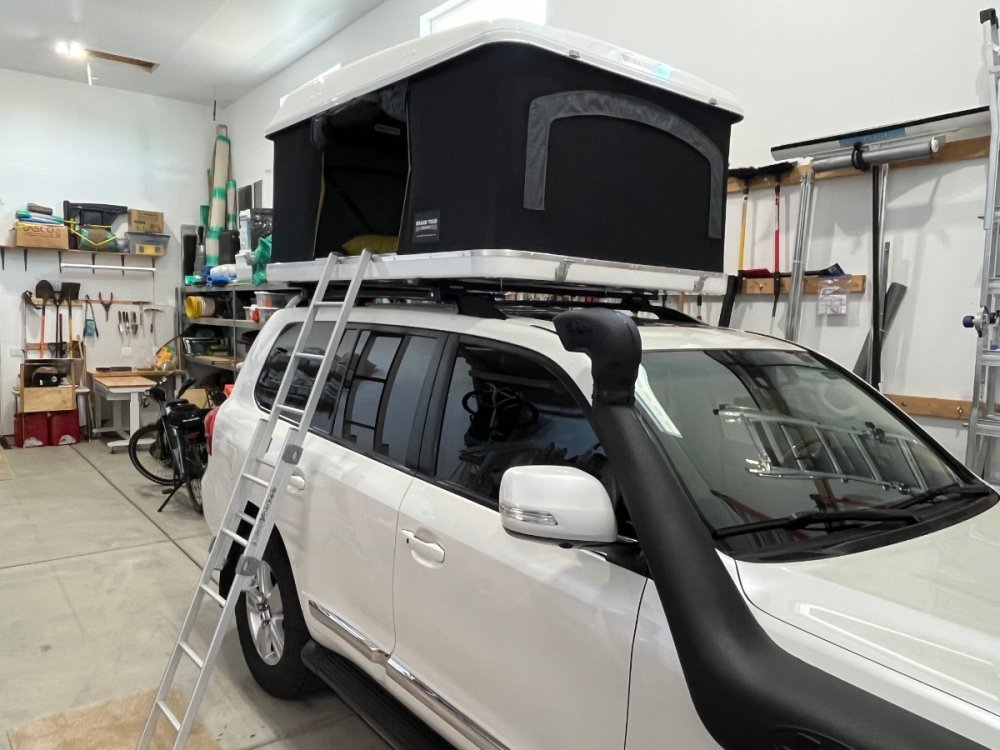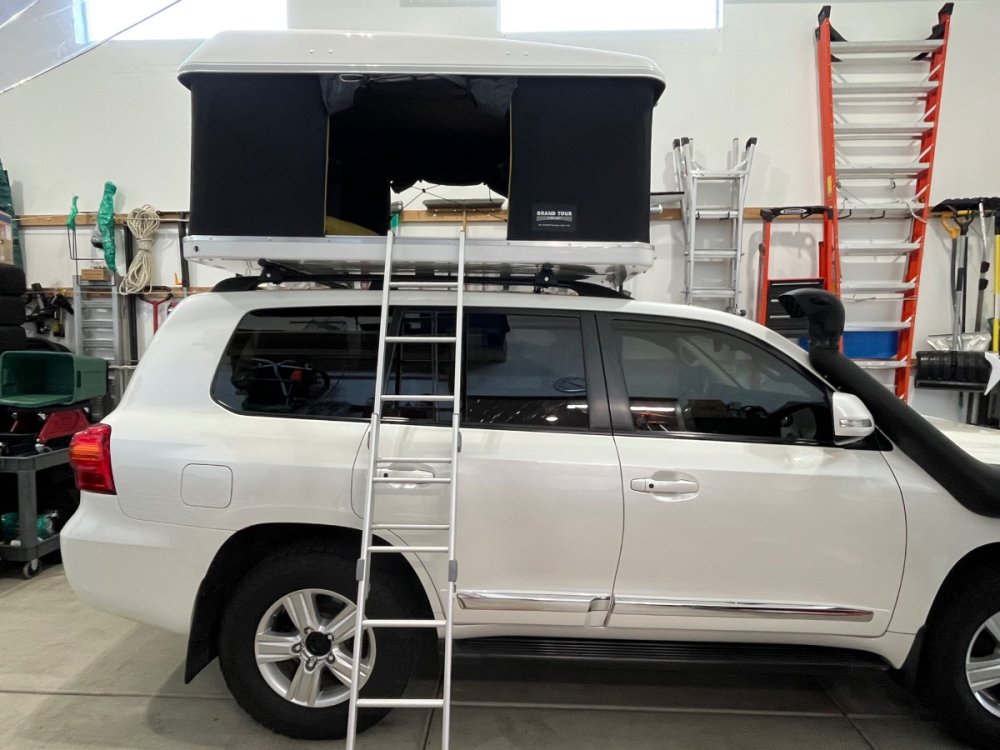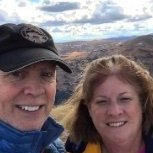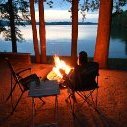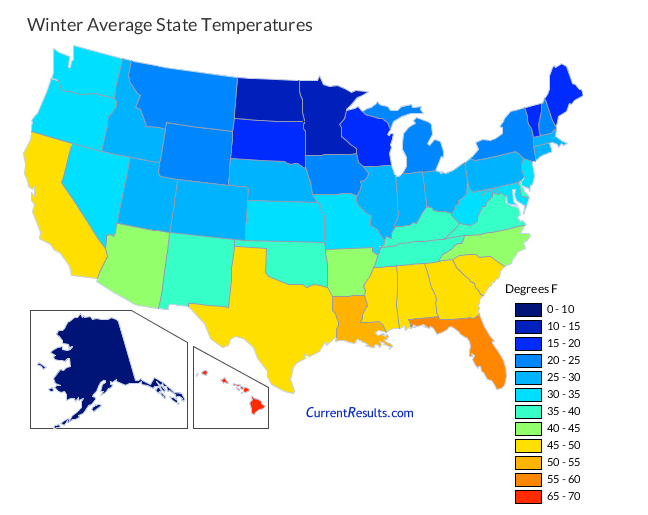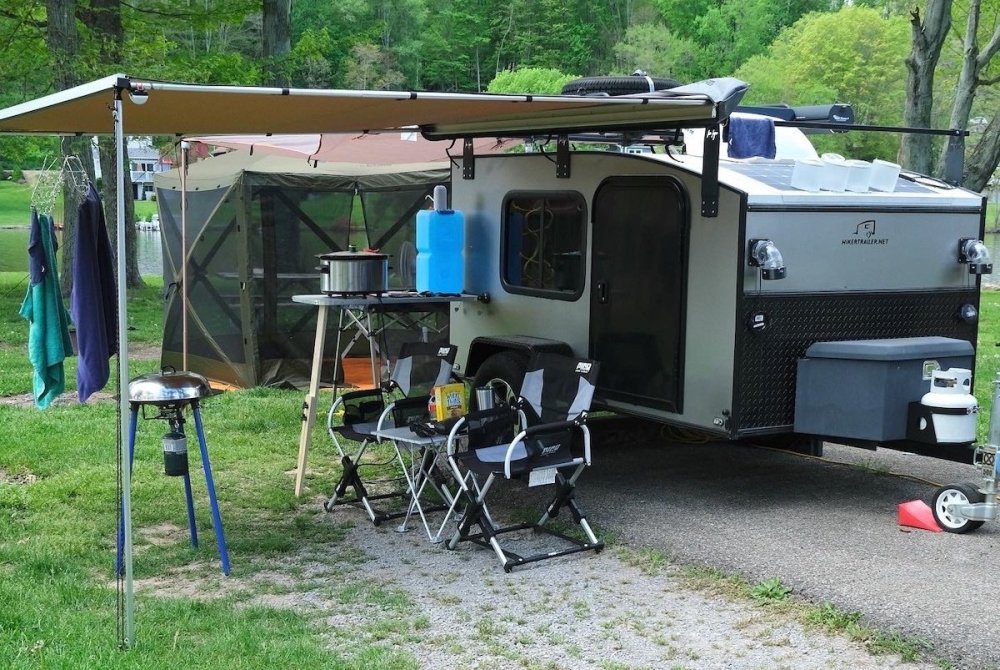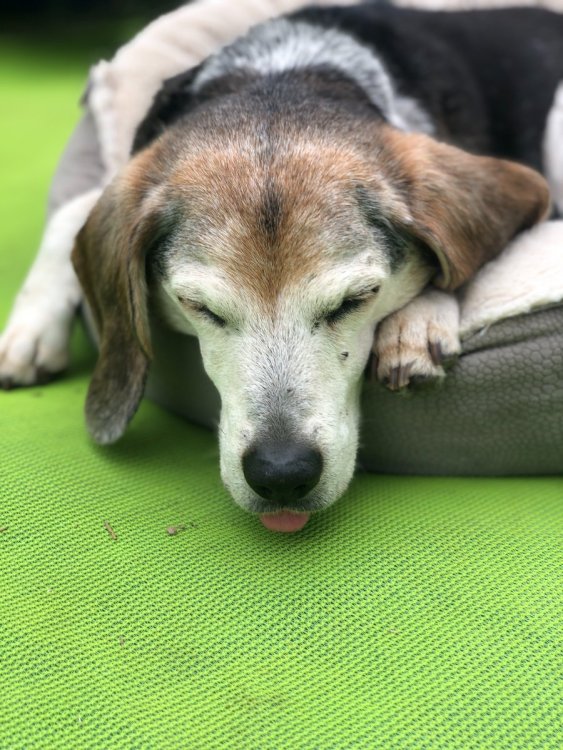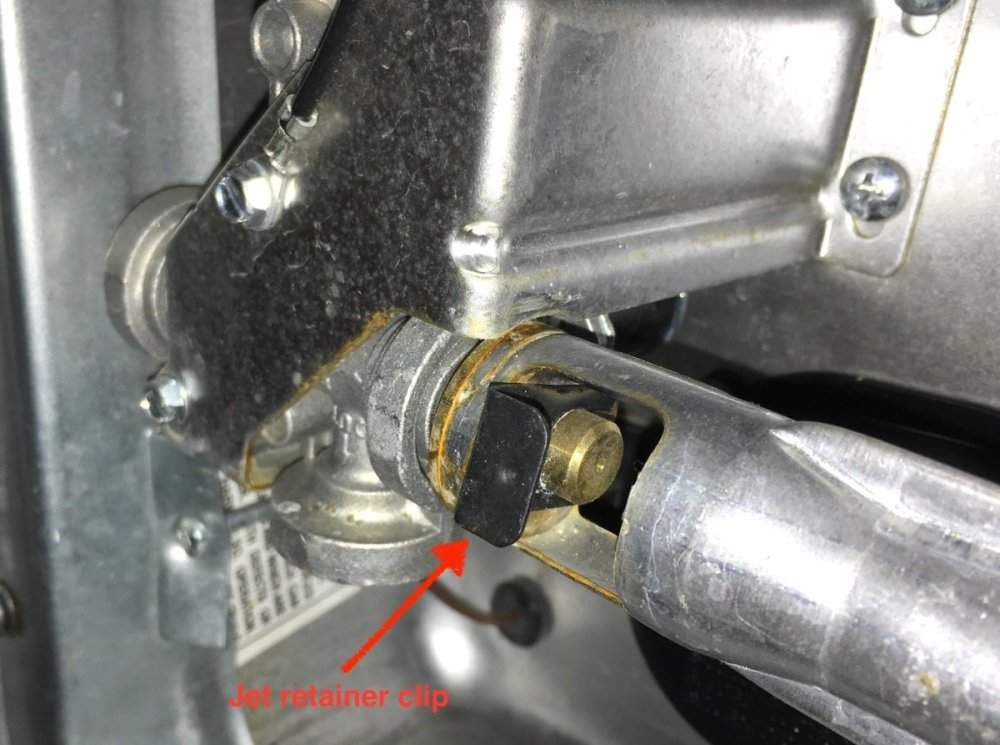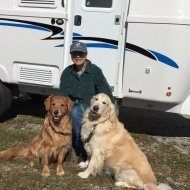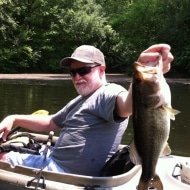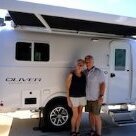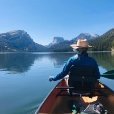Leaderboard
Popular Content
Showing content with the highest reputation on 08/08/2023 in all areas
-
I wanted to improve the sound quality in our trailer so I bought a couple of JBL Charge 5 speakers after reading lots of reviews. The speakers are small and both will easily fit in any of the overhead compartments. I bought these so that we could use them while camping but I can also use them while working on projects in my garage and around our home both inside and out. About 2 minutes to pair them to my phone and they were up and running. We enjoy listening to music considerably more than watching TV while camping...at a reasonable volume level of course 🙂 The sound quality is really quite impressive and the volume at the 50% setting is more than ample. Reasonably priced IMHO to boot. https://www.crutchfield.com/p_109CHRGE5G/JBL-Charge-5-Grey.html?tp=633315 points
-
I have a couple of the JBL Charge 3's for awhile now and love them. Great sound, you can link up an unlimited amount of them, and they can also be used as a battery bank to charge phones and other devices.5 points
-
Our "real world" test was a success. After resetting the LBCO to 11.5V, as authorized by Jason Essary, we had no inverter shutdowns when boondocking (without shore power, of course) over the weekend. We used the Truma AC, a small 120V vacuum cleaner, a hairdryer and the microwave (one at a time, of course), at various SOC levels, with no inverter shutdowns. I learned from Jason Essary that the origin of the problem may be traceable to a new bus bar that Oliver began installing in late 2022, and then 2023 models, with the Truma AC. Apparently, the new bus bar reduces the DC voltage sensed by the inverter by enough to trigger a Low Battery Voltage Cutoff (LBCO) if the default setting of 12.0V is not lowered. In our case, resetting the LBCO to 11.5V eliminated the annoying inverter shutdowns. Jason advised that Lilthionics has approved the adjustment to an 11.5V LBCO for those with the new bus bar. I chalk this up to "growing pains" incorporating the new Truma components into the Oliver electrical system. To his credit, Jason Essary kept conducting tests, and working the problem, until he found the solution. So, contrary to the suggestion in the initial post in this thread, the solution to inverter LBCO shutdowns is NOT a hard reboot, but simply resetting the LBCO to 11.5V. I cannot explain why both the first and second hard reboot produced short-term results. Maybe one of you electric engineers can tackle that question. But for now, the LBCO reset appears to be working. Hope this helps anyone else with a late 2022 or 2023 model that is experiencing LBCO inverter shutdowns.4 points
-
This should be considered a "work-around" rather than a "fix" and Oliver should come up with a permanent solution, which I'm sure they will. In my particular case, running a 1.5kW load, the voltage indicated by the Xantrex display was .5V lower than what was measured at that battery. This doesn't seem like much but it does cause a premature and unnecessary shutdown of the Xantrex, as many have experienced, since the Xantrex interprets the battery voltage being much lower than it actually is. Changing the LBCO to a lower value to compensate works however it doesn't change the fact that there is still a .5V drop across the wiring and associated circuit breaker. That doesn't sound like a big deal but what it equates to, in my case, is that running a 1.5kW load results in 60W ( conservatively ) being dissipated by the wiring on the DC input side of the Xantrex. That's power that's not being applied to the load and results in unnecessary heating of the wiring (although small). Ideally there would be no voltage drop between the battery and the Xantrex, in reality there will be some, nothings perfect, but .5V is excessive. Having said all that the "work-around" will work, as I've been using that method for a while with good results, and my heavy electrical loads are usually temporary.3 points
-
Thanks for all your articles and advice. Always bringing up questions we all think but do not ask and then providing some answers to make us all think.. Enjoy your new adventures!2 points
-
Well, that's another "potential " problem, not one anyone is likely to face with quality lifepo4 batteries, but it could happen. Fighting a lifepo4 fire is different from a traditional fire, from what I have read. Not unique to Olivers. Many manufacturers now offer a lithium upgrade. And, many owners have done their own upgrade, hopefully to a reliable source. Someday, near in the future, we'll likely see a requirement for a lithium hazard symbol. Everywhere. For now, my home is powered by solar and lithium, and one car. Tesla markings on the outside of our home, at the transfer switch, should help firefighters, hopefully, if ever needed.2 points
-
We use the cube style boxes from kleenex expressions tissues for our grocery bags. They get stored in the upper cabinets at the back curved section of the roof line. I start the summer with three full ones and add used ones every shopping visit. GJ2 points
-
I just requested info from Jason on the springs, and he confirmed the 9150014-02, 1750 lb (each) 25.25 length. I've not used this vendor, but found these online. http://www.dexterpartsonline.com/product/9150014-022 points
-
We've been bringing this stuff along ever since our trip from NM to Key West in 2018. We were staying a few nights in Grassy Key and the flying/biting bugs were awful - they gravitate toward me more than D, so I was already enjoying a couple weeks-worth of lumps. HA! Bought a couple cheapo box fans from WalMart and set them up on our "patio" to sit in front of... A local couple came by and said they liked our fan arrangement but to get some "Bug Soother" - so we did. For us it works great and we've got at least a couple spray bottles living in the bathroom overhead storage. D buys it by the gallon from Amazon... Haven't tried it in Alaska yet, seems like the go-to stuff up there is a high percentage DEET spray! Ugh...2 points
-
The black flush line enters the trailer, makes a 90 degree turn and enters the side of the black tank. All of this is accessible from the rear dinette seat. I had to replace my backflow valve and it is mounted on the flush line just where it enters the tank. The only picture I can find right now is where the flush line enters the black tank. This is looking from above, the side of the trailer is at top, the side of the black tank on the right. We have a 7+ year old trailer, I don’t know if they’ve made any changes here.1 point
-
It was quite painful to sell, but this was the correct move at this stage in my life. For privacy I won’t say who bought it, but he is a member and if he wants to announce it, that will be on his dime. I emptied out the RV bay for the first time in six years, washed the floor using a push broom and Dawn detergent, and lots of water, and moved my LC200 over to that spot. I now have a vast area to park a vehicle or do workshop type projects, and my wife now has a big corner dedicated to gardening, with two big workbenches, power, light and pegboard. A happy wife is a happy me… Plus I have even more room for my indoor 10 meter airgun range. We will continue to travel and explore the back country at times, but we will stay primarily in motels or B&Bs. But if we encounter a splendid isolated pull-off overlooking a great vista, we can pop the Maggiolina Grand Tour 360 Carbon and rough it for a few nights. It takes about a minute to crank up, and three minutes to put back down. It is pretty darn crude compared to an Ollie, but it is a simply stunning tent. I was really afraid that there would be a big mpg hit from the tent, like with the Yakima RocketBox Carbonite Low, but I was delighted to discover that I got 16 mpgs going to the dealer with bare round bars, and 17 coming back, and no noise at all at 72 mph. That is good mileage for a Land Cruiser with LT tires, they are gas hogs. It’s way better than the 10-12 I got towing “Mouse” at 62 mph. I may install wimpy Geolander AT G015 tires after our next big trip, they will save 52 (!) pounds of rotating mass and I expect to gain another couple of mpgs. They are great “tweener” tires for an Outback, RAV4 or LC200 that isn’t doing lots of rocky stuff. I have had two sets already on other vehicles and I am impressed. We plan to attend the Total Solar Eclipse rally in Fredericksburg next April, but we will be forced to sleep in the ground due to stupid CG rules. If anyone wants a dirt cheap big heavy Eureka! tent and fly in fine condition, come by and talk to me on Tuesday morning after the crowds have departed. After the eclipse, we will head home via the Utah parks and hopefully spend a few nights on the delightful White Rim Road in Canyonlands NP. I will continue to hang out here on the forum, but my posting will be dramatically reduced. The members here feel very much like family, I can’t just go away. John Davies Spokane WA1 point
-
I got a message from them last week. They are back in ND but are still trying to get the correct springs.1 point
-
Tom, a 0.5 volt drop is indeed excessive and indicates a mechanical problem. Loose or corroded terminal, bad crimp, internal fault… you should fix it and not dismiss it. This is how fires start. John Davies Spokane WA1 point
-
1 point
-
We’ve had two C-Gear Original Sand-Free Mats since 2017 (10x10) and 2019 (8x11) in orange/teal. The square one fits perfectly in our six-sided CLAM enclosure. They worked great in the teardrop, where it is too east to transfer dirt and grass inside. Now they’re perfect for the Oliver. They dry fast, fold relatively small, and work as advertised. They do tend to gum up with clay mud, but a good hosing off at home easily cleans them. I don’t know if it is still the case, as I don’t see it on their web site, but both of ours were made in the USA. The company started out making landing mats for military helicopters is sandy locations.1 point
-
We used to roll out a huge PVC mat I think it was like 8x10😳. Wrestling and cleaning this large mat became more trouble than we were interested in dealing with. So we opted to go a with a much smaller 4x6 PVC mat and lay a rubber mat that actually drains water through the bottom. The porous heavier rubber mat lays on top which keeps the pvc mat in place should a breeze kick up. I picked up two of the small PVC mats at Wally World for $20 a piece on an end cap. One as a back up should we need to replace the old one. The new smaller mat works perfect, has held up great and is super easy to manage and clean (hose off) and take up very little room in the bed of the Beast. My attempt to make set up and break down of camp a little more user friendly. The huge PVC mat goes in the donation stack. Small door mats matter!!! 😂 Patriot🇺🇸1 point
-
Totally concur, 100%. Maybe a bit off the topic of this thread, but... We carry and use an inexpensive portable surge protector for all the same reasons @ScubaRx describes - plus connecting it first to the power pedestal will give you a reading of the nature of the power being provided at that point of usage. We recently had a reversed neutral readout - it stopped us from connecting the Ollie and we notified the RV park office attendant. Apparently, recent maintenance on the pedestal left this condition. It may not have caused damage by proceeding to connect, and the internal Surge/EMS would have likely saved the day - but why gamble on it?1 point
-
This question is for the guys only. Who among you doesn't pee outside just to save room in the black/pee tanks? Don't lie, if you say you've never done it, the rest of us will just laugh at you and call you a sissy boy.1 point
-
5.3 with 3.42 on a 2019 LTZ 2wd that we got new in 2020 with 22 miles on it. We did extend the warranty to 100,000 and are looking to extend past that. Over 90,000 miles at the moment and are in Glacier NP now. No problems in the mountains and have been through Wolf Creek pass at 10,800 feet. Of course 40 mph up and 30 mph down in 3rd and 2nd gear, 3500-3800 rpm. Next truck will probably be a 3/4 ton as we are at 6800 lbs on the truck and 6800 lbs on the trailer (full timers). Andersen wdh and added air bags for us. Best of luck, John1 point
-
1 point
-
Great, I was hoping I would be able to hold off getting a bigger vehicle until closer to retirement. I did order the anderson hitch and I just finished installing the Tekonsha P3 for added braking. Yes, we have become youtube watchers and seeing all the must haves, trying just to get those for now....watchdog ems, etc. Thanks for all the info...i'm sure I will have a tin more questions!! Mark1 point
-
I've towed my LEII with two different 1/2 ton trucks both here in the East and through out the Rockies out West. Absolutely no problems . However, you will need the Andersen weight distribution hitch AND you will need to pay particular attention to your payload capacity. Bill p.s. picking up a new Ollie in October is fantastic! You've got the better part of two months to do some serious camping and then you have the winter to do your mods plus get all those things you've learned that you want for that new baby. Welcome to the family!1 point
-
https://olivertraveltrailers.com/forums/topic/4376-7-cup-pur-water-pitcher-fits-neatly-in-pantry-affordable-filters/ The very first night we camped was in the nearby Fall Hollow (?) RV park that Oliver paid for. Our site had the fresh water spigot located BELOW ground, a few inches away from the waste pipe. Needless to say I did not use the fresh water supply. You can seriously contaminate the fresh tank, it is best to never drink directly from that supply. Use a cheap blue filter when you fill and some sort of filter system or bottled water for human use. Just say no to E. coli. John Davies Spokane WA1 point
-
We camped once when night time temperatures were mid-teens and daytime temps were high 20s. That was for about 5 days. No issues with water lines freezing. We’re not big fans of that type of cold and avoid it if possible. The last time I had my basement partitions out I could see the water lines laying against the hull as they ran around the back of the trailer. It would be easy enough to either wrap those with insulation or lay some thick insulation down under the water lines. The back of the trailer seems like it is the most vulnerable area for the water lines. The lines under the bed seem more protected but should get some more insulation too. For the few times we’re in weather below 20 that might be enough. Thanks to our cold weather campers for their experience. Mike1 point
-
I have had a few questions regarding 4-Season camping with the Oliver and wanted to make a post so it would be available for everyone. What is 4-Season camping? It simply means that the Oliver is capable of being used through all 4-seasons. It does not mean that it will necessarily have no freeze issues in certain areas during certain climates. This is no different than a house. Here in Tennessee we recently saw sub-zero temperatures and many people had their water lines freeze and burst causing lots of damage. Does that mean that their house is not capable of being used during the winter? No, it simply means that in certain temperatures you may need to make arrangements to combat the temperature. In the past I have had my water lines freeze that were located on an exterior wall of my house so this time when they said we would see sub-zero temperatures I placed a space heater on that wall area to help keep it warmer and the next morning I had no freeze damage. Below is an average winter temperature for the United States however this is just an average and when temperatures go below the average especially when going into the low single digits or below zero, whether in a camper or a house you may have to perform steps to ensure freeze damage does not occur.1 point
-
While you're at it and if you have any material left over - simply go under the dinette and/or beds and place another layer over the water heater (assuming the Suburban), and then any other area that you can reach. Also, while you're in the basement, a layer on that little "wall" between the basement and the interior where the backside of the shower is located could use some. Bill1 point
-
"I'm guessing that you didn't have much (as in none) of a problem with bugs - mosquitos have always been a big problem for me in that area 😬." Easy to spot the mosquitoes at that time of the year with their parkas on. They fly slower too. Great time to camp. 😂1 point
-
No problems with bugs at these temps. Last year, during the early October bow season, my two sons hunted and tent camped the same area. Again, no bugs but when they returned to their tent following a day of hunting, the tent had been torn down by a bear. Needles to say, their hunt was cut short as they quickly packed up and skedaddled back to their truck. They were much more comfortable this year, camping with me in our new Oliver...my days of tent camping, during any season, are over now that we have the Oliver!1 point
-
I think most of us are very conservative about exposing our plumbing to cold temperatures. Personally, I'd be at DEFCON 2 if I saw 33 degrees near a water line. However, hitting 32 isn't necessarily going to mean damage. The compartment might be 32 but the water in the lines is still 35. The water may have room to expand by draining into a tank. PEX plumbing is more tolerant of freezing than PVC. I imagine there's some wiggle room. What I'd really like to know is, has anyone experienced plumbing damage in their Ollie from freezing, what was damaged, and under what conditions did it happen? In other words, what are the real world limits to what our Ollies can take? Not that I'd want to go there...1 point
-
My last trip last winter was 5 days where daytime temps were in teens and nightime lows around 0. I attribute mad scientist mods with the level of success we had but, it felt like walking a knife's edge. Temp in battery box was solid, by the knobs to shower was in mid 30s and between the shells, under the front dinette seat dropped till freezing till I propped open the lid in the seat. Then was in high 30s. Our trailers are so well insulated that having extended daytime periods above freezing allows the inter-shell area to warm up which may have an effect that lasts well into the night. This is pure conjecture as none of the weather I saw last season got that warm. Super interesting stuff. Really helpful hear everyone's experiences. Thanks for sharing.1 point
-
This is really great stuff. Its one thing to deal with night time temps dropping into the 20s when day time temps recover well above freezing. Its a whole different ball of wax when those day time temps stay in the 30s or below.. Its interesting reading about how you folks are managing those conditions.1 point
-
Hull 806..LE2.....a repost of our low temp camping experience. I have no problem considering the Ollie a 4 season trailer but I know I have to monitor the temps and always have to have a back up plan (or three) if "oops" happens (bold below). >>>>>>>>>>>>> We camped in Wyoming with lows around 15 degrees for a week, not winterized, with no problem. Altitude was about 7,000 feet. I have three SensorPush HT1 Wireless Thermometers to monitor the temps. Sensor # 1 was located in the cabin attached to the rear most driver side reading light. Sensor # 2 was located between hulls under the passenger side bed near the tail lights & water lines. Sensor # 3 was located between hulls under the driver side bed next to the shower outlet. On the outside of Ollie, I removed the shower head and pulled the water line inside the hull and reconnected the shower head. I set the furnace to mid/upper 50's and monitored all three temps....adjusting as desired. The driver side had the largest variance to the cabin temperature.....about 15 degrees. I have two 30 lb propane tanks. We were boondocking. After 5 or 6 days with ice/snow cloud cover....the batteries got down to about 50% SOC. At that point, I used the generator to recharge....not risking the furnace fan operation. We consumed one tank of propane and promptly got it refilled. (This was a portion of a five week western trip..we had been running the refrig on propane so we did not consume the whole tank in this one week). I also carried a Caframo heater and anti-freeze/pump ..... just in case. We operated the water system/hot water heater as normal. We did have to deal with condensation. (((BTW...I have move one of the sensors to inside of the refrigerator. We adjust the temp setting according to the readings. Early on in our experience we were having veggies and eggs freeze because we did not monitor and adjust....now, not an issue.))) Steve1 point
-
Your primary hazard when using the furnace is indeed CO poisoning (from a stress crack in the combustion chamber, which is impossible to predict). You are putting a lot of faith in the two Oliver installed “yes/ no” CO detectors. The one under the galley isn’t going to be helpful, CO is lighter than air. The combo smoke/ CO unit below the attic is good, if it works. I recommend this digital CO detector as a failsafe, it will show you trends, for example, the current level (should be very close to zero, but up to 50 is acceptable in the short term) and the highest reading since last reset. https://olivertraveltrailers.com/forums/topic/6780-how-to-replace-the-propane-co-detector-with-a-gas-only-one-and-a-digital-co-detector/ I have three of these, one in the trailer up high, one in the RV bay, one inside the house (because I have gas appliances and heating). The Rv bay unit shows elevated levels briefly when I have run a car in the attached garage, it has never actually got to an alarm level. Those who camp in milder weather should crack a rear window and open the bath vent half way and not stress too much. If you are running electric heat, there is no worry at all about carbon monoxide death…. Which I understand is quite nasty, but OTH it is quite hard on your family and friends. Symptoms of carbon monoxide poisoning may include: Breathing problems, including no breathing, shortness of breath, or rapid breathing Chest pain (may occur suddenly in people with angina) Coma Confusion Convulsions Dizziness Drowsiness Fainting Fatigue General weakness and achiness Headache Hyperactivity Impaired judgment Irritability Low blood pressure Muscle weakness Rapid or abnormal heartbeat Shock Nausea and vomiting Unconsciousness John Davies Spokane WA1 point
-
That's it exactly. We were testing the system free of frozen line consequence This winter we are planning a month long cross country ski safari and, being that long, would want to be able to have showers. Scuba, We're super interested in your project and not just the process of rerouting water lines. Hope to hear the gory details.1 point
-
Thanks for the very informative post. It is particularly useful to know that the "stock" trailer will protect the water systems from freezing down to 25 F, and that you burned about 15 lbs. (3+ gallons) of propane per day when nighttime lows were in single digits. Please forgive me if this is a dumb question. But, if you kept all water systems winterized the entire time, using only containerized water and your composting toilet, what would it matter if the external shower was exposed to freezing temps? The winterizing process should have filled all of your Pex lines with RV antifreeze. What am I missing?1 point
-
And, for your reading pleasure, 4 pages of posts on "winter camping" here on the forum. Using our search function. https://olivertraveltrailers.com/forums/search/?q="Winter camping"&updated_after=any&sortby=relevancy&search_and_or=and1 point
-
Probably a silly question; to override the automatic retracting in much more than a mild wind, is there a power switch to disable it? Or simply pull the fuse? I'd prefer a manual awning, but that's no longer an option; both are fully automatic.1 point
-
Our style of camping is still a little primitive compared to what it will be when our Oliver is ready. 🙂 We too really enjoy the benefits of the CLAM shelter, since we don't really have any indoor space in the trailer. Our biggest complaint is how hot to gets inside due to limited airflow with the fine screen material. If you ask Deb, she'd probably say the changing room with CleanWaster folding toilet for the middle of the night needs. One that's really been handy, and probably will still be in the Oliver with its limited storage, is a pair of GCI Pico folding arm chairs. Much more comfortable than cheap bag chairs, and roomier than our Helinox Sunset chairs that are always in the Cruiser. They're sorta like directors chairs, but they fold up the size of a brief case. Pricy, but very convenient (wow! pricier than I thought. They were $89 when we bought ours last March) https://www.amazon.com/gp/product/B07N71DDXW/ref=ppx_yo_dt_b_search_asin_title?ie=UTF8&psc=11 point
-
@MarkV and I just returned home from one of our first trips in Olivia (hull #953), this one 10 nights of boondocking/dry camping in the Pike National Forest at around 7500 feet. TLDR: we had an absolutely spectacular time camping and mountain biking with a pile of our friends. Olivia's systems performed nearly flawlessly, and we could have stayed off-grid for at least 10 more days. Some notables from this trip: 1. SOLAR/BATTERY: We have the platinum package - 630 Ah lithionics, 340 W solar, 3000W inverter- coupled with an external 200W Renogy Solar Suitcase. This system performed flawlessly, although we did have an issue with the portable suitcase -- its output is 20A, but the inline fuse at the Ollie's solar port is 10A. Based on the wire guage sizes along the entire portable system (10) we made the decision that a 20A fuse would be just fine, since the wires are rated up to 30A and the total input into the batteries would never exceed the maximum recommended by Lithionics. Even in the brightest direct sun, the Renogy never put out more than 17-18A. Success, but I do intend to call Oliver and discuss with service. We did not skimp on our electrical useage -- baked cookies and a couple of meals in the convection microwave, toast in the toaster every morning, made at least 3 meals in the InstantPot, frothed hot milk every morning, held 2 "boondock refill sessions" where we ran the water pump for what seemed like forever, 24/7 fan use, and kept the fridge on DC during travel. We even ran the air conditioner for 2-3 hours on 3 of the the hottest days. Even though our first few days were partly-to-mostly cloudy and our camping spot didn't get direct sun until noon, our batteries never dropped below 75%, and the solar managed to bring them back to 100% FULL twice on sunny days. Based on this first data point, I'd estimate that we could camp indefinitely with occasional full-sun days, and at least two weeks in cloudy conditions. 2. WATER: We are very water-wise while camping, but 10 days is a long time. We started with 30 gallons of fresh (forgot to turn the HW bypass before we left, so didn't have that extra 5) and 15 gallons of drinking water in jerry cans. Our son and friend brought us 10 gallons of fresh mid-trip. We also used our Lifesaver Pressurized Jerrycan to purify another 5-8 gallons of creek water and used 6 gallons of creek water to do 2 loads of laundry in our Scrubba bag. Our miserly ways included doing dishes just once a day at night in a basin in the kitchen sink, then using that water to put out our campfire rather than putting it in the gray tank; showering just twice during the week, and sponge bathing the other days. While we did have to use the boondock port twice to add about 15-20 gallons of water, we ended the trip with around 4-5 gallons in the fresh tank and the grey tank at about 60% full. We could have gone another 5-7 days easily, but we might have run out of food first! 🙂 The only thing I want to change for our next big boondock trip is the addition of a "touch" faucet at the kitchen sink. The stock faucet is nice, but very tricky to get the very low flow I prefer for rinsing dishes. The touch would allow you to set the flow once and forget it. We love the one we have at home, and my BIL is visiting for a month and loves projects, so.... If anyone has attempted a touch faucet in their Oliver and has advice/warnings, we'd love to hear them! 3. ALTITUDE: While we expected to have issues with our refrigerator on propane at 7500 feet (it's "rated" to 4500, with a recommendation to run on DC above that altitude), the fridge performed remarkably well on 100% propane. It did seem to need a bit of babying with regards to temp setting, though, having to turn it down at night and up during the heat of the day. (Anyone know why Norcold doesn't just install a thermostat instead of a 1-9 setting? Hate that "feature"!) While we might have been able to get away with running on DC full time if the sun was full every day, 10 days is probably just a bit too long to run it 24/7. Where we DID have issues with altitude was with the Suburban water heater. Apparently, this must be "derated" 4% for every 1000 feet above 4500. We'll be taking advantage of Google and Oliver this week to figure out what needs to be done, but the water heater was not happy at 7500 feet. It would sputter, stop, sputter, run, sputter, stop, run. And eventually we would get hot water. Clearly, we need to figure this out since 99% of our camping is above 4500 feet. 4. ENVIRONMENT: I remember long ago, before ordering an Oliver, that someone on the forums pointed out that the Oliver is very well-insulated and it likely wouldn't be necessary to run the A/C while we left the dogs inside to go riding. It's true! When we left for our rides in the morning, temps in the Oliver were around 65 degrees. We closed all windows tight, and when we returned 2-3 hours later, inside temps were at most 73 even when the outside temp was in the 80s. It helped that we parked in a spot where Olivia didn't get sun until around noon. Given how well the battery/solar package worked for us, if we're camped in a sunnier spot, I won't hesitate to close everything up and set the A/C to come on at 75 degrees, just in case. 5. COMPOSTING TOILET: In short, love it. We wouldn't have been able to dry camp 10 days with a conventional toilet. Given the altitude we were camping at, as well as the level of activity (2-4 hours of mountain biking every day), we consumed a LOT of water so we, well Mark, emptied the pee bucket every day and a half, but the solids container still has plenty of room. Solids did get a bit cloggy, probably due to too much moisture (I over-did it) and too much TP. Next time, I'll adjust the coir/water ratio and we'll put ALL TP into a waste bin. 6. CONNECTIVITY: I am pleased to report that our CradlePoint system with both AT&T and Verizon sim cards failed to produce any signal at all at our campsite. 🙂 Seriously. That made me very happy. Had we known that Starlink was going to go mobile this summer, we might have gone that route instead of CradlePoint, but....then we would have had internet in a place that we have always said is better enjoyed "unplugged". 7. FOOD: We don't believe in "roughing it" when we camp, and why should you when you own an Oliver? We ate like kings while out for 10 days. Our setup includes the InstantPot as well as a two-burner camp chef stove with the optional griddle and grill. While we did run out of fresh veggies after 7 days, we still did all right. A sampling of our favorites: Organic Chicken Flautas (Costco) with avocado and poached eggs (made in the microwave) Garlic Parmesan White Beans (themediterraneandish.com) Steak and Grain Bowl - NY strip, pearled barley, grilled onions and mushrooms, roasted brocolli, avocado InstantPot Oatmeal - steel cut oats, dried apples, mashed bananan, spices, maple syrup, toasted nuts InstantPot Honey Chipotle Tacos (cooking.NYTimes.com) Turkey melts: flour tortillas, cheddar cheese, apple, bacon, greens Seared Salmon with brown rice and sauteed spinach Beef Short Ribs with wine and tomatoes (pre-made at home, leftovers frozen for camping) And wine....plenty of wine. IMG_2135.MOV1 point
-
The only place to NOT blow the compressed air is directly into the gas jet that JD showed in the picture above. Other than that simply blow all of the stuff out of there. A real telling area to direct the stream of air will be straight up the flue - if you get a small shower of particles back down, you just might have found the "problem". Bill1 point
-
Great report, I am glad the Ollie worked so well. What solar port is on your trailer? If it is the round Furrion one, that connector is only rated for 10 amps, which is why the 10 amp fuse is there. The wires are plenty large. So if you have that round connector you are grossly overloading it with 18 amps. If you have a different brand, it may be rated higher. I haven't ever had any issues with water heater or furnace at 7500 feet. You should check and adjust your gas supply pressure to be sure there isn't a problem there, before swapping jets around. For the gas check you need a special tool or have an RV tech do it. If the gas supply is in spec, then you can proceed with the following. FYI it is about a two minute job to swap out the gas jet in the Suburban water heater for a smaller one. It simply clips in place. Since it obviously was having issues, try a smaller jet, ask your local RV shop what they recommender for the size. A larger number stamped on the brass jet is a SMALLER hole. You don't need to pay somebody to do this! Put the original back in when you get back to say 5000 feet. https://olivertraveltrailers.com/forums/topic/3243-how-to-service-and-inspect-your-suburban-hot-water-heater-gas-system/ John Davies Spokane WA1 point
-
The majority of trailer owners who own a trailer capable of Boondocking off the grid... have no idea how to find or locate a Boondocking Site. Western States were once defined as being west of the 100th Meridian. These States have the majority of 'Public Lands'. These are Bureau of Land Management (BLM), National Forest System (NFS), State Lands (usually School Section 16 in each 36 Section square miles and of course National Parks, Monuments, Historical Sites, etc. Boondockers looking for Public Lands have some very good references available. The most detailed are those sold by the United States Geological Survey as Quadrangles. Some outdoor sporting shops sell them as well for local needs. These are for very detailed maps for small areas. For myself, I find the Delorme Atlas and Gazetteer very handy for States we are exploring. They will indicate in colors various land ownerships. City, town, Indian Reservations, BLM, NFS, School Sections and Private Property within public lands. The scale on most are one inch covers 4.7 miles. Some vary and the scale is printed on each map. Roads are consistent as to Highway Interstate and State, County and all season, improved and unimproved BLM and NFS to jeep trails. After exploring an area, you will understand there are differences from those who mapped New Mexico and those who mapped Wyoming. So... experience is learned by actually doing some unplanned side trips. These 'side trips' are where you set up a Base Camp with your trailer and drive further into a remote area to discover those... hidden Gems that you may visit often over time. Often campsites in public lands are marked on a map. One may be displayed on the map, but ten may be located on the way. It appears to be random, but if marked on the map, the campsite may have a water pump and a pit toilet. Some have a picnic table. Some have... nothing but pullouts with gravel. An Oliver can manage about any of these easily. Once a trailer is longer than 25 feet it becomes more difficult as these older camps are intended for smaller trailers used before 1980... or 1950. Often there are 'hunter camps' that have open areas that the largest trailers can easily move around and find ample room for one to twenty trailers. Experience is 'King'. There are Geological State Maps sold by each State if you are a rockhound. The BLM and NFS sell maps of their area offices and sometimes in the general area with their road marked with a number system. The longer the number, the worse the road... kind of plan. At times the smaller roads no longer have a sign. It fell apart decades ago. But, still the maps are very handy. Always mark your camping spot on the map. We add the elevation, as well. Describe the location and if you liked it... or did not. It can come handy if you want to quickly stop on a trip through the area years later. We use our previous locations, frequently. Some locations we revisit often. What are your map preferences? How does it work for you? Has a map taken you to lakes, rivers and creeks that you would have not visited? Early explorers recorded their travels before roads and maps. They made accurate maps and sold them to those wanting to travel west. Much like the Oregon Trail... many discovered better routes and sold maps. Technology has improved maps. GPS is wonderful... if you recorded the location for future reference. Great for get togethers and reference.1 point
-
I do not care for the Delorme atlases, I find them to be WAY less useful (recreationally) than the Benchmark ones. Unfortunately there are only 13 western states available. I have all of them except for Texas and Alaska. https://www.benchmarkmaps.com/atlases However, they are a great tool for research and a final backup in case my electronic devices fail. I use 1/4” stick-on colored dots to mark points of interest and major turns. My iPad Mini 4 has a number of camping and nav apps on it. I have tried most and deleted many.... The one I most recommend is GAIA Premium ($40 annually) since the Layers function lets you add just about any kind of info, like Forest Service MVUM (Motor Vehicle Use Map) data, which will tell you where you can and cannot drive. I can’t stress enough how important this is. GAIA is OTH pretty rotten for simple road navigation. The other app I use all the time is Pocket Earth Pro. The basic app is free, the Pro upgrade is $5 and adds topographic maps. For just driving away from urban areas where your cell phone is dead, it is wonderful. The graphics are very pretty and the thing that sold it for me is the user adjustable font size. You can make the city and town labels almost any size you want, and they are dynamic. When you zoom out they get bigger too, so older eyes can easily read them. All other similar map apps I have tried do not have this feature. Map downloads are quick and simple and you can use the app anywhere in the world. GAIA is for really hard core users, Pocket Earth will be useful for anybody. Try it out, see if you agree. https://pocketearth.com/ That said, for routing on normal roads I use a Garmin RV gps. It is way better than the factory nav systems I have seen. Plus the maps are free and updated quarterly. My 2013 Toyota maps are pretty lame, and they cannot be updated without a very expensive trip to the dealer. John Davies Spokane WA1 point
-
I know you've already completed your spring trip, but this came up in my feed this morning. I thought I would add it to the thread for future reference for all. We haven't camped in any of these spots, but they're all free. 5 free camping spots in South Dakota1 point
-
When boondocking, I use three plastic dishwashing tubs to wash and rinse dishes, and one to use to bathe and wash my hair . Use that one also to soak my feet each evening. Believe it or not, you sleep better after soaking and cleaning your feet! Even better if you use Epsom or magnesium salts in the soak water. An old nurses trick I used in my hospital days for restless and uncomfortable patients. Heat water on stove and mix with cold from five gallon containers, easier to lift and store, to get best temps for bathing with a washcloth. I love the composting toilet. Under 32 degrees or when driving in cold weather, I keep the tanks empty and winterized. I use biodegradable soaps. Dr Bronners best for multiple uses. Honda 2000 generator and portable jump start pack as backup for using small electric heater and keeping electronics and smartphones charged.1 point
-
IMHO draining the chrome flex line by gravity should be sufficient, as the hose is the only external part, everything else is inside.1 point
-
We were at the Bristlecone Pines campground in CA at about 8,500 ft. Got all set up late in the day and I got a campfire going. Then it started to snow. Beautiful. I sat outside in the snow and just marveled at the quiet and the beauty. Poking at the fire and moving closer to stay warm. A libation offered some distraction from the gathering cold and darkness. Liye decided to move inside. Eventually, I moved in too. But looked out the window at the orange glow and fog of snowflakes. Again, totally quiet and we were the only ones there. Miles from anywhere and anyone. The heater clicked on and off during the night and as I noticed it, I also noticed how snug we were. Snow makes the dark forest even quieter. Morning brought the chance to see how much snow we got and start a new adventure going on up to the 10,000 ft level to marvel at the 5,000 year old trees. Bristlecone Pines. One of my favorite places. Through coring and other tree ring methods we can look back 12,000 years with a recorded history. All of this from trees growing in a dolomite soil that was previously a sea bottom. Now, that ancient "sea bottom" is at 10,000 ft elevation. Such are the wonders of the Sierra Nevada Range and plate tectonics. Fun to ponder on a quiet night, camped in the snow with a warm fire crackling. The idea is to lean into it, experience it, marvel at what it is. Try to grasp the enormous amount of time that has passed to form this scene. Living trees that I can reach out and touch, that were alive when the pyramids were being built. But more than that, soil that formed as a sea bed and is now here! Without our beautiful little trailer, we could never come here and have a comfortable winter visit.1 point
-
Winter Camping is an awesome experience. I'd have to say, all our experience is likely different from newer trailers, as we have less insulation. I try to capture grey water, even with pink stuff in the tank. We've camped in Canada where the site services are turned off, but the comfort station is heated,so we can still dump dishwashing liquid, and use their showers, etc. We're so accustomed to camping without any service, that I typically heat dishwater in a tea kettle, and capture the water in a dishpan. That method saves a lot of water, and makes disposal easy in cold weather camping. It's all captured. I also heat water for bird baths in a kettle. You can get clean without a full shower, for a limited time, without using the grey tank. It's hair washing that gets tough. Sherry1 point
-
John - down the drain with the grey. Never had a problem, but, as Sherry points out, I've never had below freezing temps for days on end either. Sherry - Since I put the water container on the toilet seat, I've not used them directly in the on-board toilet. I would have thought that the plastic bags were too deep but, of course, one could always simply fold the excess top of the bag over the top of the toilet. And, since Reed has actually done it this way without problems, it obviously works. Perhaps now I'll have to find a new place for my water container (or simply move it when nature calls). Note that these bags are not cheap, but, if used more than once they provide an easy way to take care of things while still leaving the camper protected. I also use these in the Summer while fishing out West. When boondocking I set up my shower tent for my solar shower and (like Reed) to keep the black tank from getting "over loaded" by simply using my "seat" and these bags in the shower tent. Bill1 point
-
This is so cool, we are located in a great big empty field at the end of a dead end dirt road, half a mile from the downwind end of the runway, we can hear the band playing, and we are kicked back in our recliners, under the shade of the awning, with the spotting scope and binoculars handy. I have the generator ready in case it gets blistering hot and we need to run the AC, but right now there is a light breeze and it is about 80 degrees. Also have earplugs but I suspect they will not be needed, since most of the afterburner stuff will be further away. The show starts in half an hour. Pics to follow, I hope to get a pic of Mouse with looping smoke trails above. Or maybe a Thunderbird doing a knife edge turn.... I love this trailer. We are learning that we don't have to camp overnight to enjoy using it as a mobile club house. We will head out late afternoon and be home in 20 minutes. Woohoo! John Davies Spokane WA1 point
-
Recent Achievements




.thumb.jpg.e34bf01ef7f7d5e99ad31856d45afbeb.jpg)
